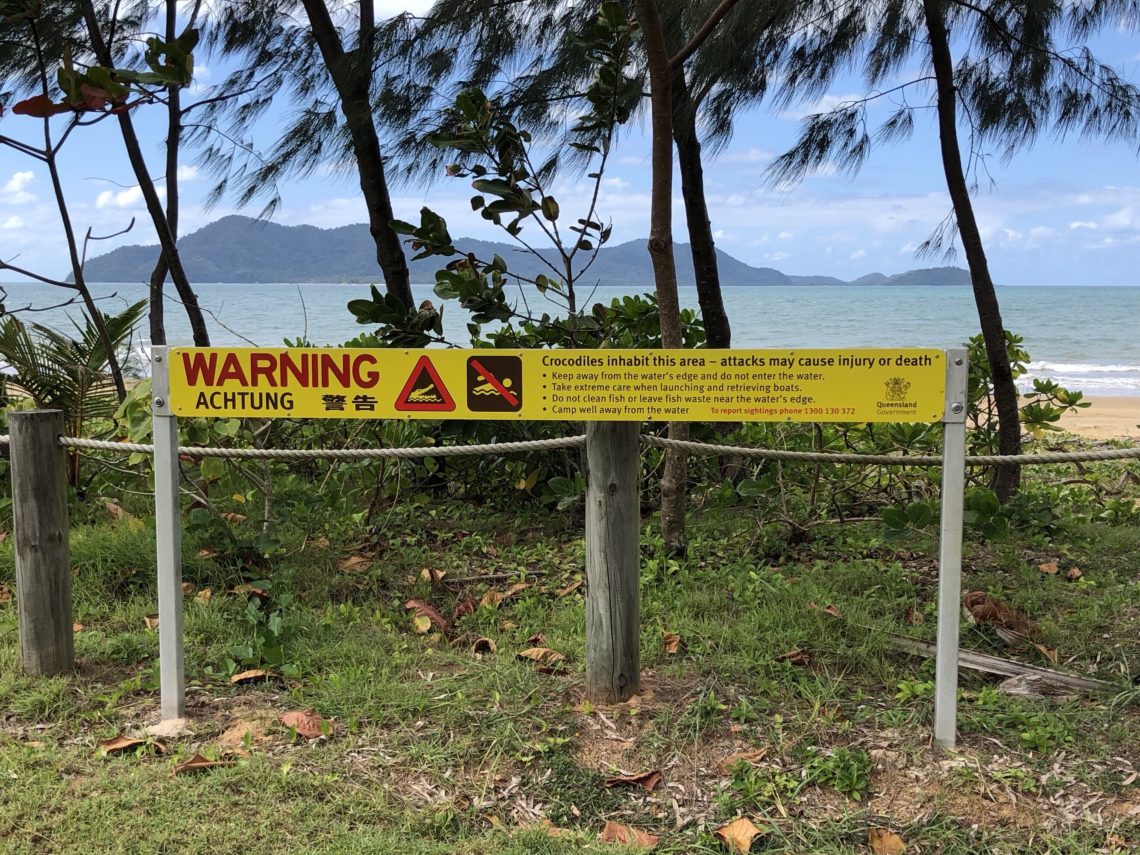
The Cassowary Coast
We knew there was a lot to see on the way from Townsville to Cairns, based on the recommendations we’d received from other camping families along the way, but we probably underestimated just how much is crammed into a relatively small area – especially after we had spent the first five weeks of this trip out in the ‘back of beyond’ where everything is pretty far apart!
Our first night out of Townsville, we camped only 75km away, at a place called Big Crystal Creek in Paluma Range National Park. We set up camp and went to check out the creek. It was an amazing preview of what we had to look forward to as we made our way up the coast…
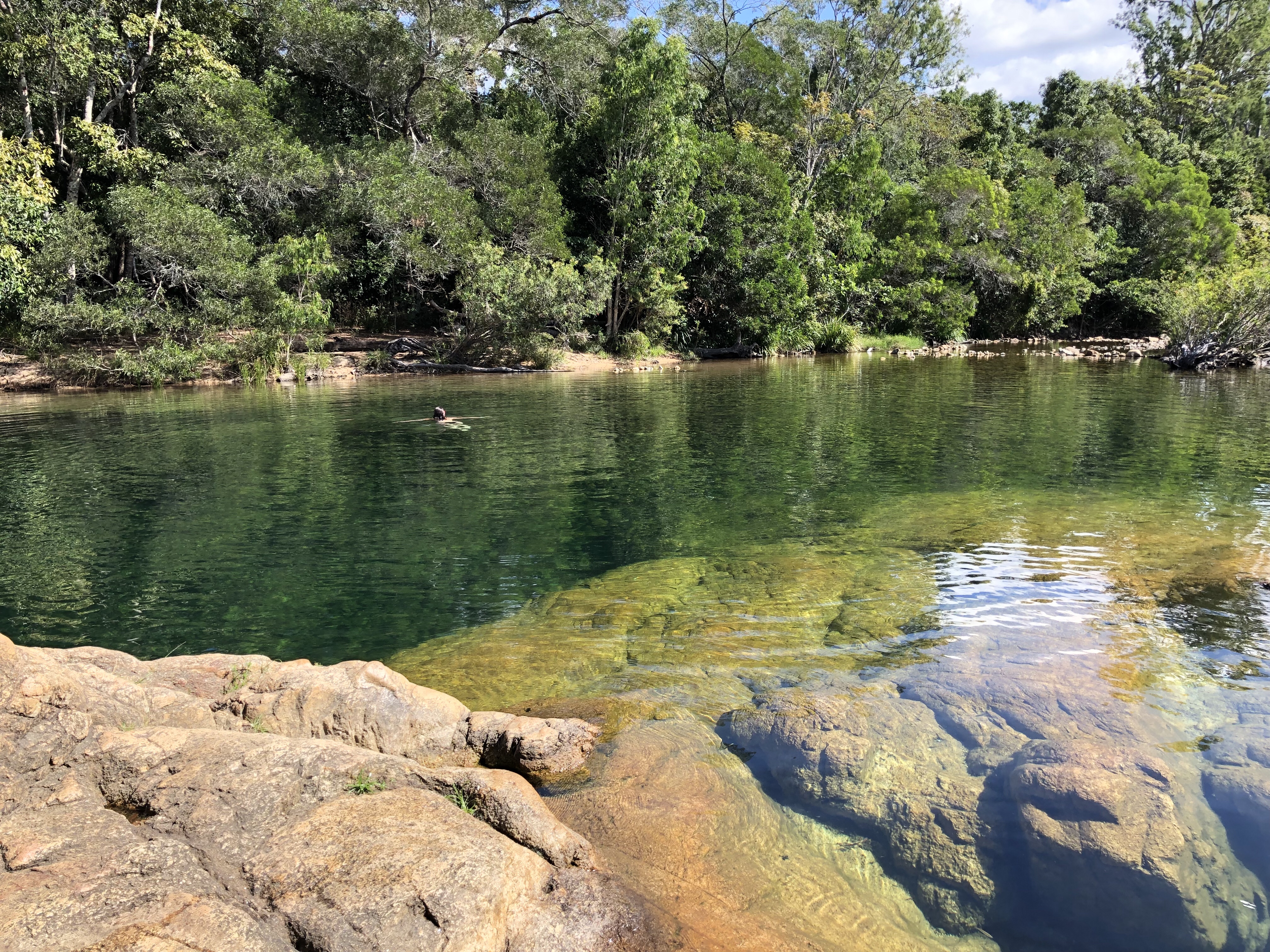
Big Crystal Creek, while it was only the first swimming hole that we experienced on this leg of the trip, remains my personal favourite of the ones we visited in the area. The photos just can’t convey how crystal clear the water is, the tranquility of the surroundings, and what a privilege it is to camp just a short 50m walk away for about $7 per person. It wasn’t even busy or popular – we had the creek to ourselves for about an hour, and then just three other people arrived as we were leaving. There was no trash in or around the creek, either the rangers or the campers or both clearly take very good care of this amazing place.
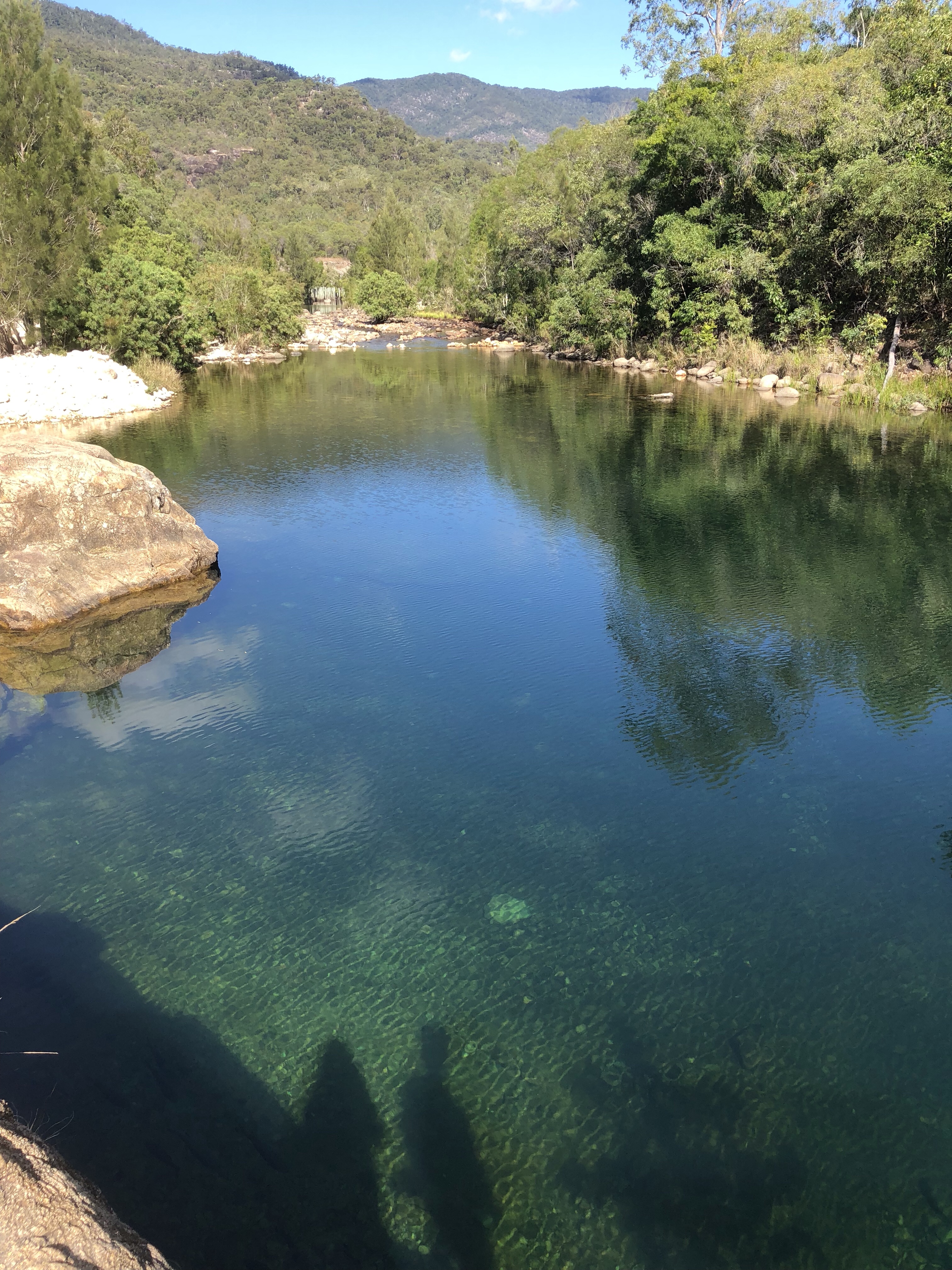
Just a short drive away from Big Crystal Creek along a winding dirt road is Little Crystal Creek, where you can opt to swim under a stone bridge, or climb the trail higher to a series of small waterfalls and rock pools.
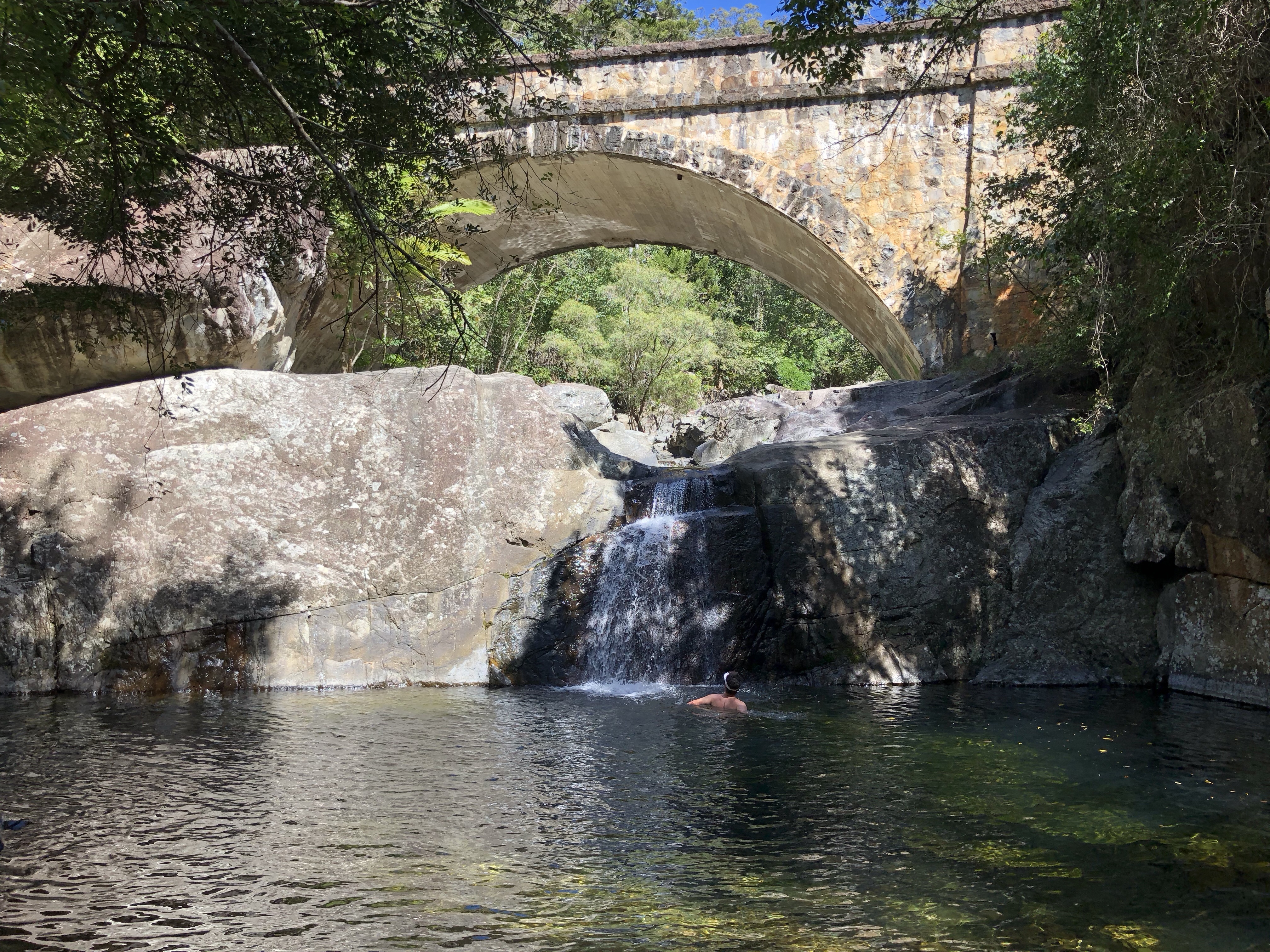
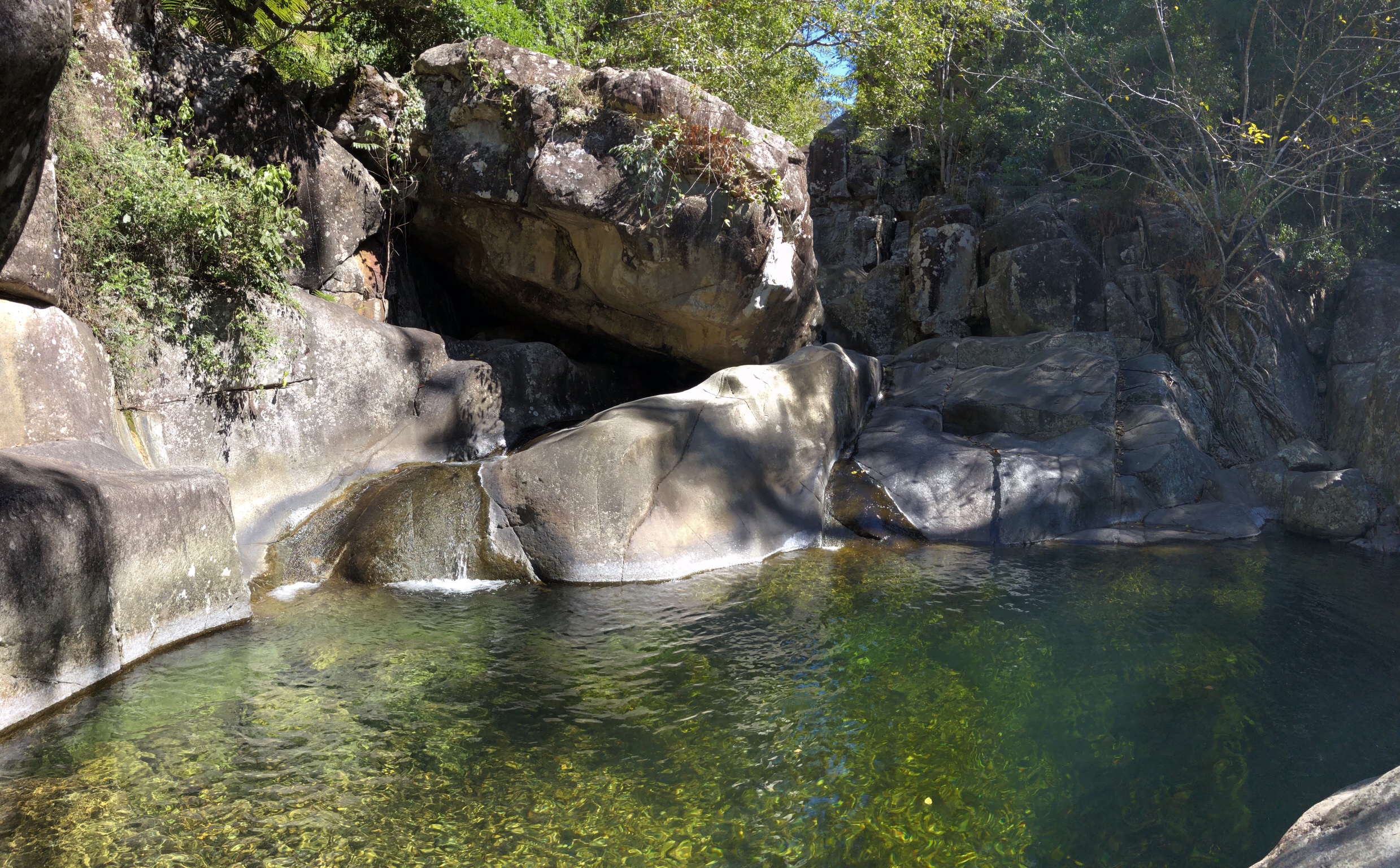
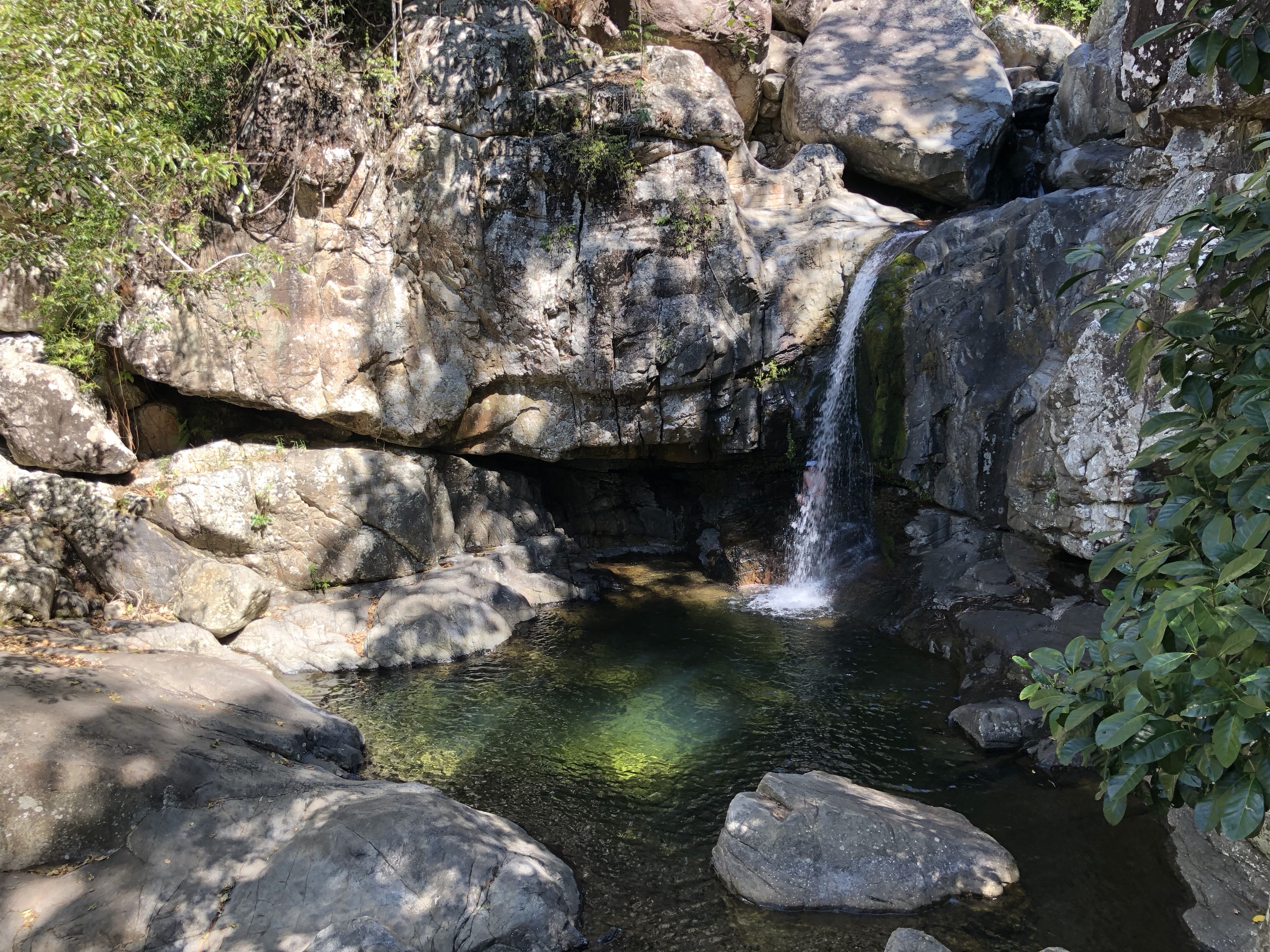
After a quick, brisk dip at Little Crystal Creek (because how can you not), we meandered up the road to visit Wallaman Falls, Australia’s longest single drop waterfall at 305m (over 1,000 feet). This was about a 100km detour but well worth the trip – the falls are massive and totally awe-inspiring. You can hike to the bottom and check out the spray (no swimming, obviously, in a waterfall of this size and power). It’s a beautiful drive out to the falls too – lots of windy road and scenic lookouts.
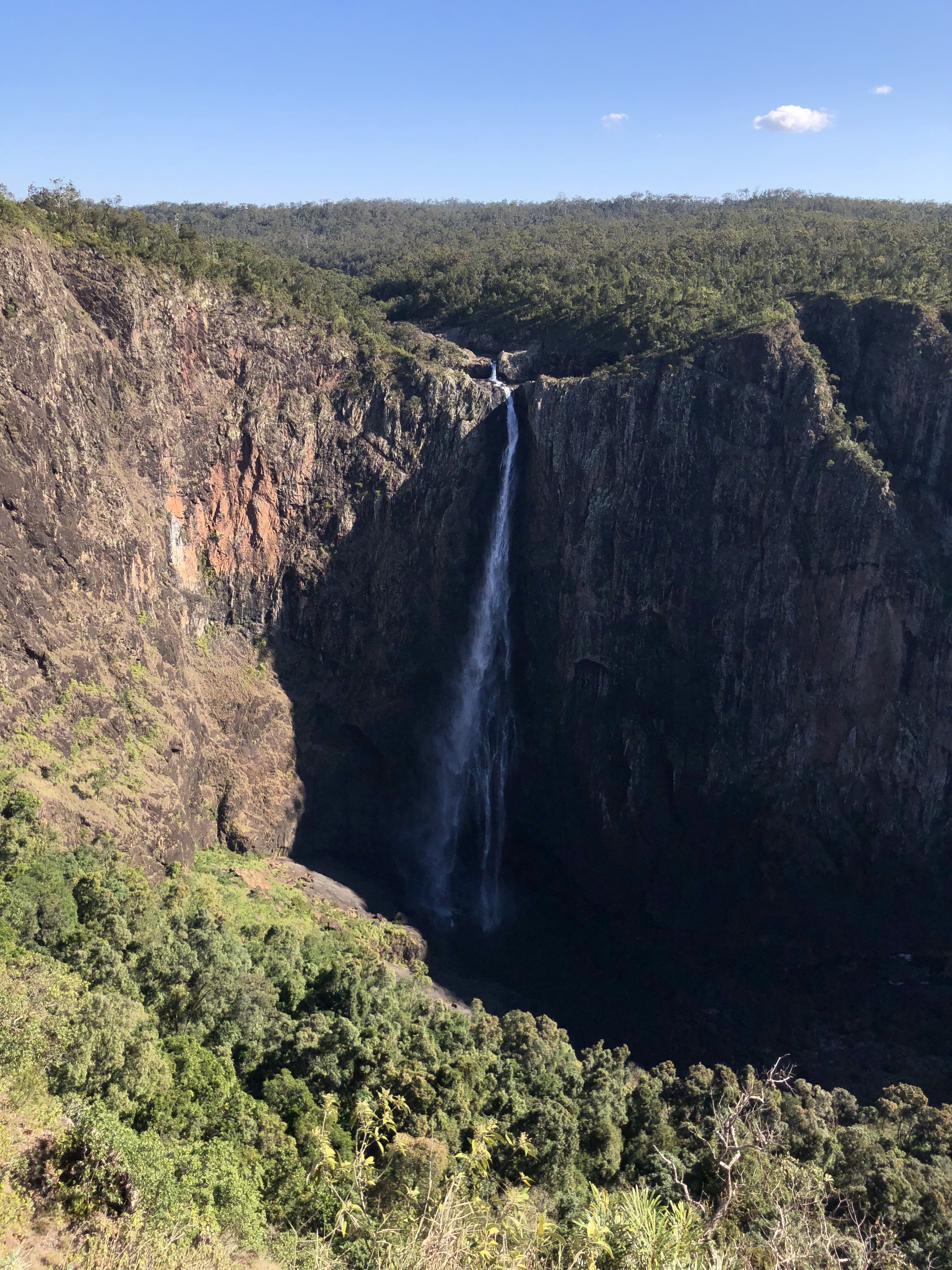
Then we were off again to our final destination and campsite for the day at Murray Falls (there were a ton of waterfalls and swimming holes on this stretch!), where we found yet another beautiful waterfall and, downstream from the base, a peaceful and picturesque swimming area where people had been creating Inukshuks (this is what we call them in Canada…the towers of stacked rocks).
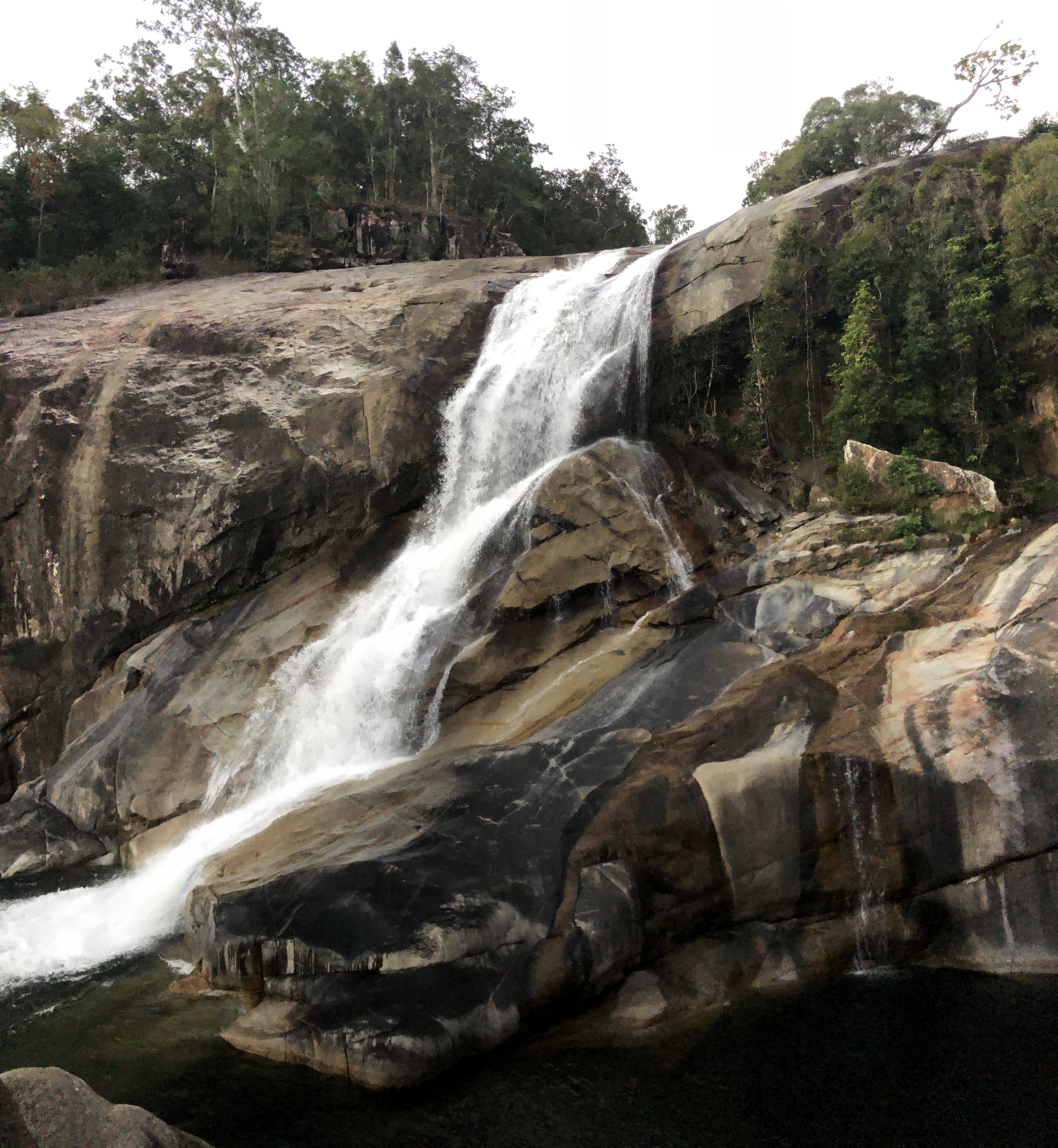
Of course we had to create our own to keep the others company…

It was super tranquil at the stream but a little too chilly in the morning (about 18C) for a swim for these acclimated AussieCanadians.
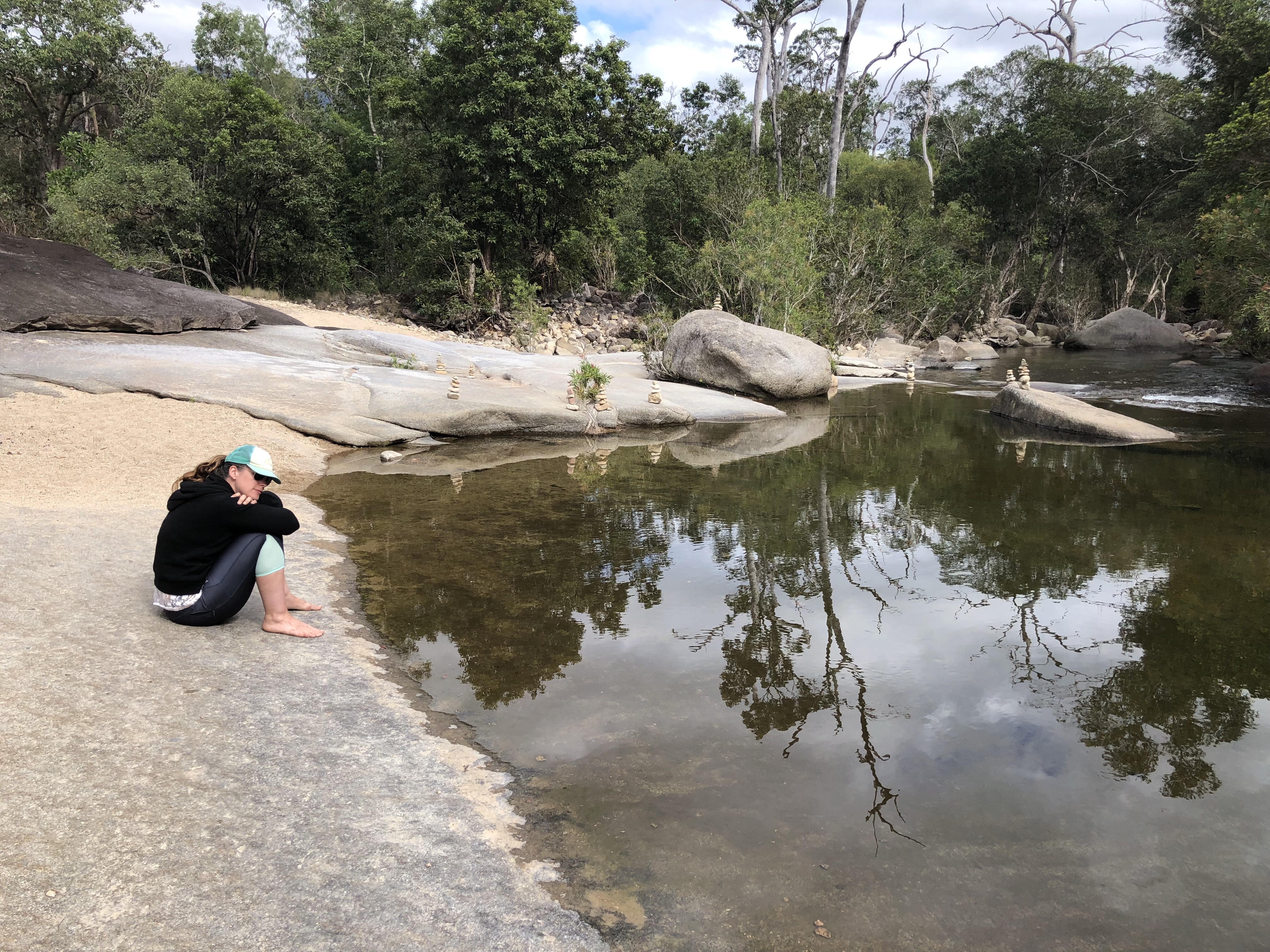
At Murray Falls there’s apparently a resident cassowary, who we weren’t lucky enough to meet, but a couple other campers had photos of when s/he’d stopped by the previous day. Cassowaries are an endangered large flightless bird that live in the rainforests of Queensland. They’re as tall as an adult human male, have a bright blue head, red wattles, shaggy black feathers, a bony wedge on its head, and three razor-sharp, dagger-style clawed toes.
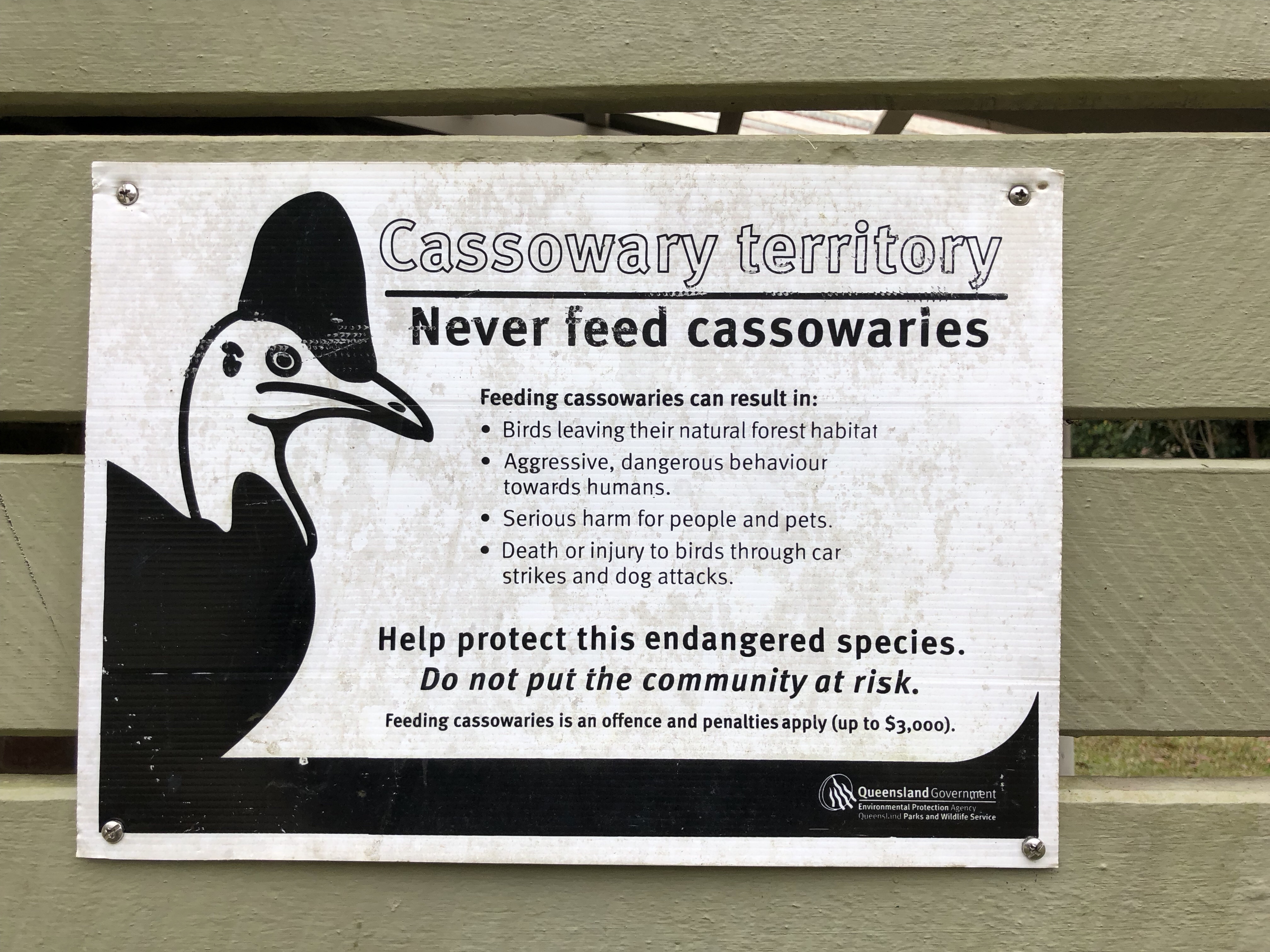
The advice if one approaches you is “do not run: give the bird right-of-way and try to keep something solid between you and them, preferably a tree”.
It’s estimated there are only about 1,000 or fewer cassowaries. They’re the only animal capable of dispersing the seeds of many rainforest fruits which are too big for other animals to eat and digest, and so are critical to the rainforest ecosystem.
We would LOVE to see one in the wild on our trip.
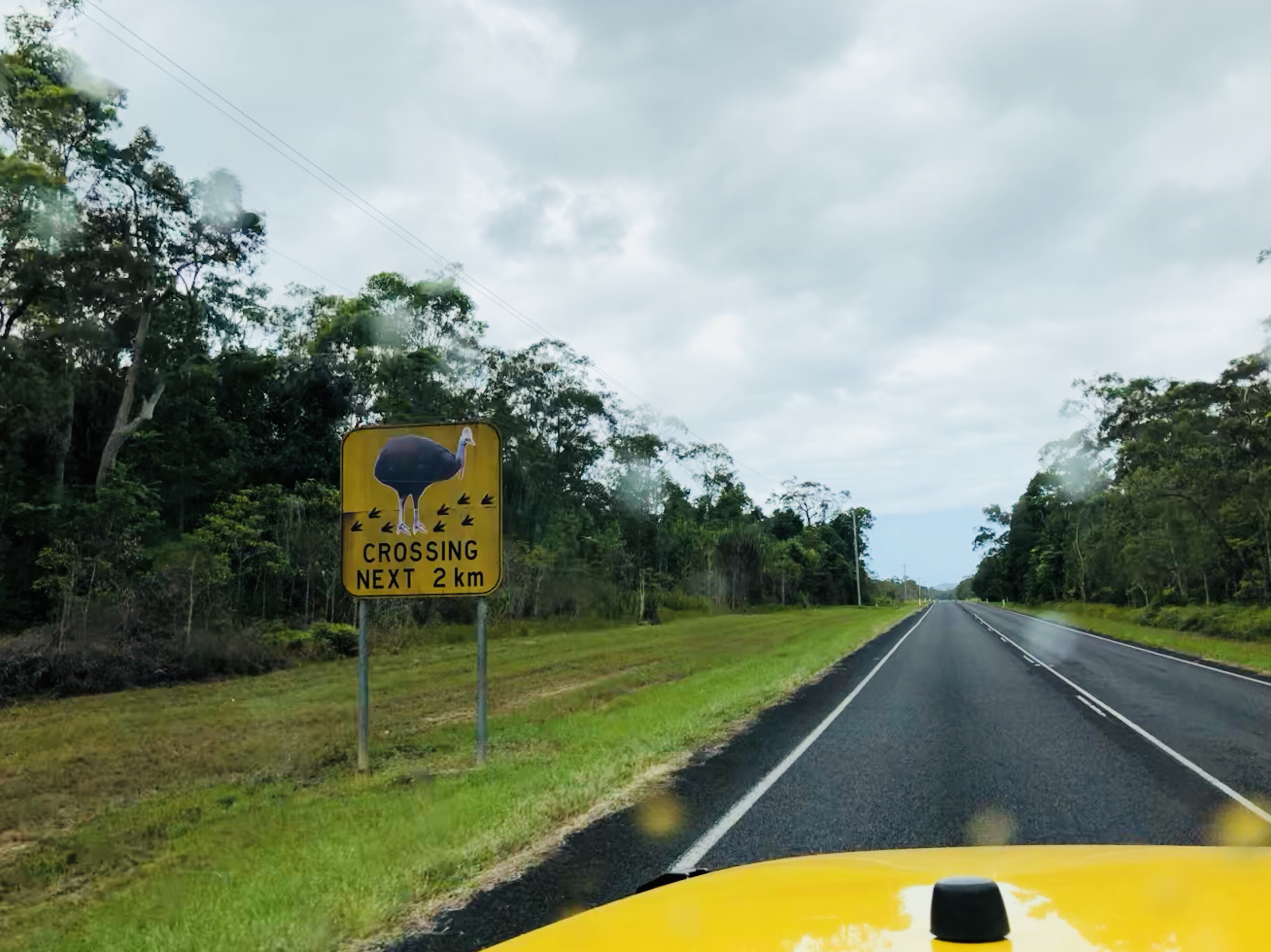
Back on the road again, we headed out for a day of checking out the small beach towns along the “Cassowary Coast” (also the beginning of the “Crocodile Coast” – bye bye swimming). We’re now firmly in Tropical Far North Queensland where there are heaps of absolutely stunning white sand beaches lined with coconut palms, crystal turquoise waters beckoning you to cool off with a dip…but no.
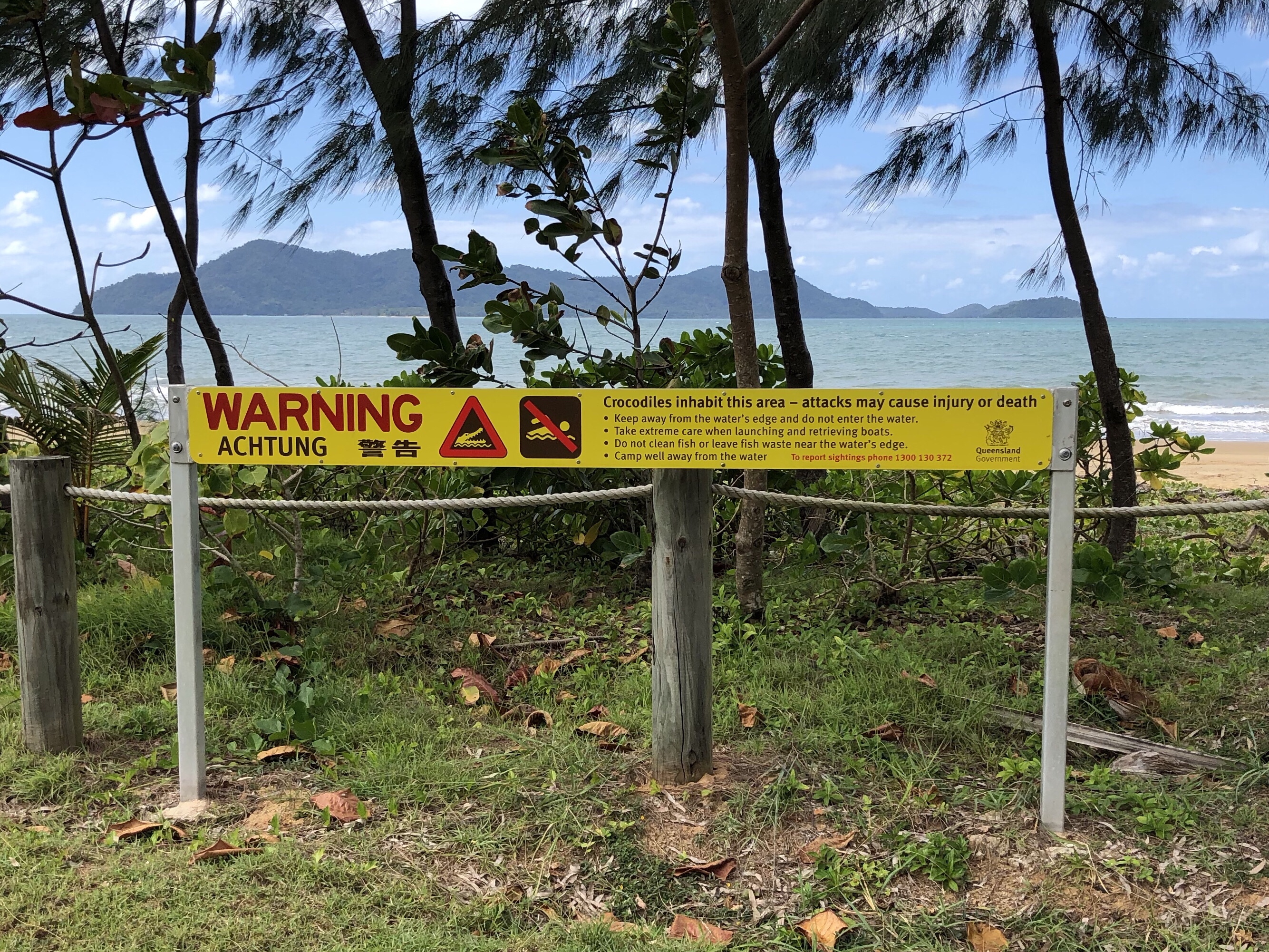
As you’d expect the tiny beach towns along the 14km coast (cumulative population of about 5,000) are absolutely adorable and the locals incredibly relaxed and friendly. We particularly loved Bingil Bay, and the too-cute Bingil Bay Cafe, where we stopped for some local advice on where to camp, plus a beer, fish & chips, and a (delicious) frozen banana each.
https://nickandpam.com/wp-content/uploads/2018/08/img_6035.mov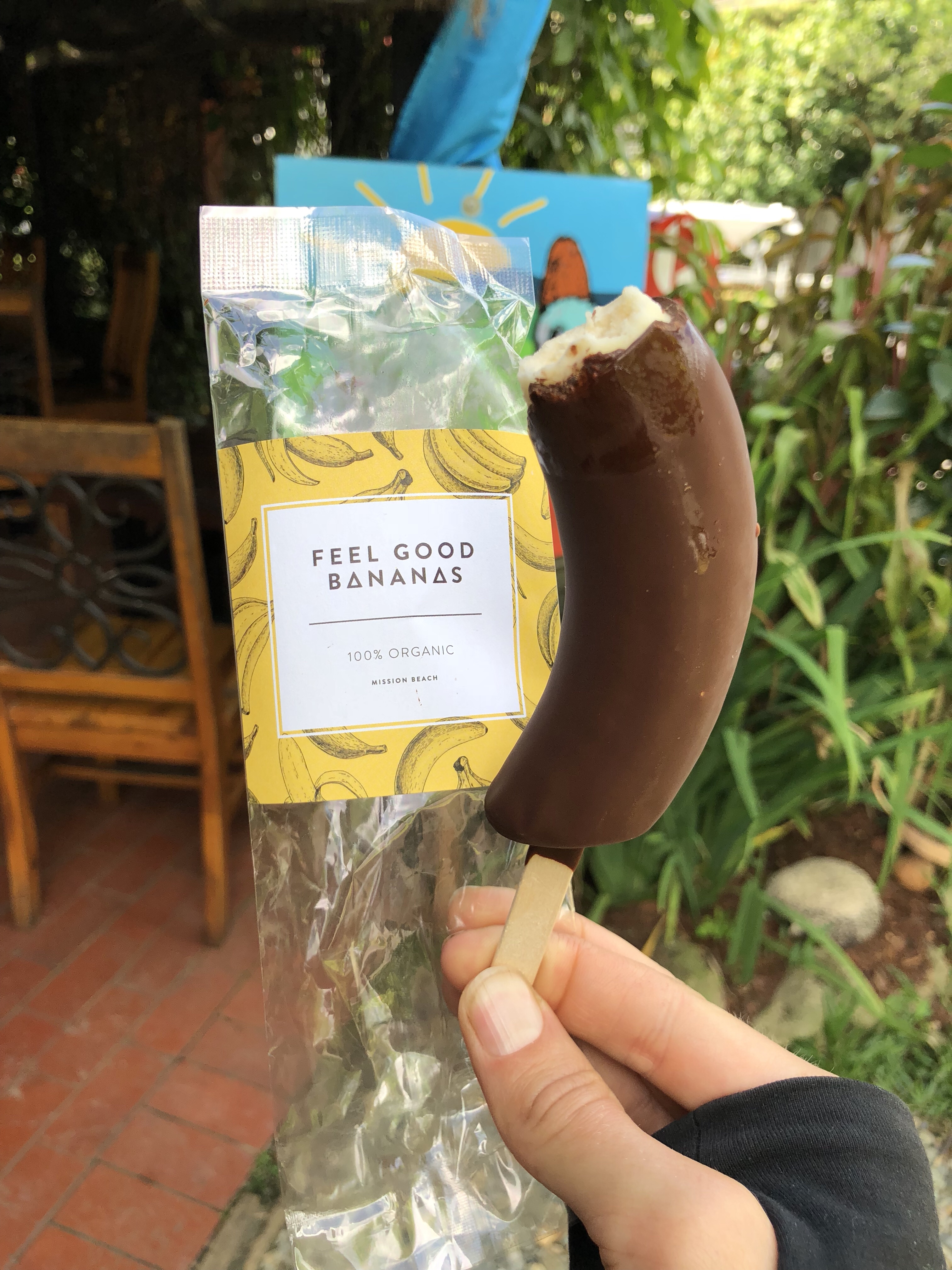
In this area you can also find many honest-box roadside fruit stands selling bananas, passion fruit, paw paw (papaya) and other tropical fruits for cheap – here’s our haul we picked up for $0.50:
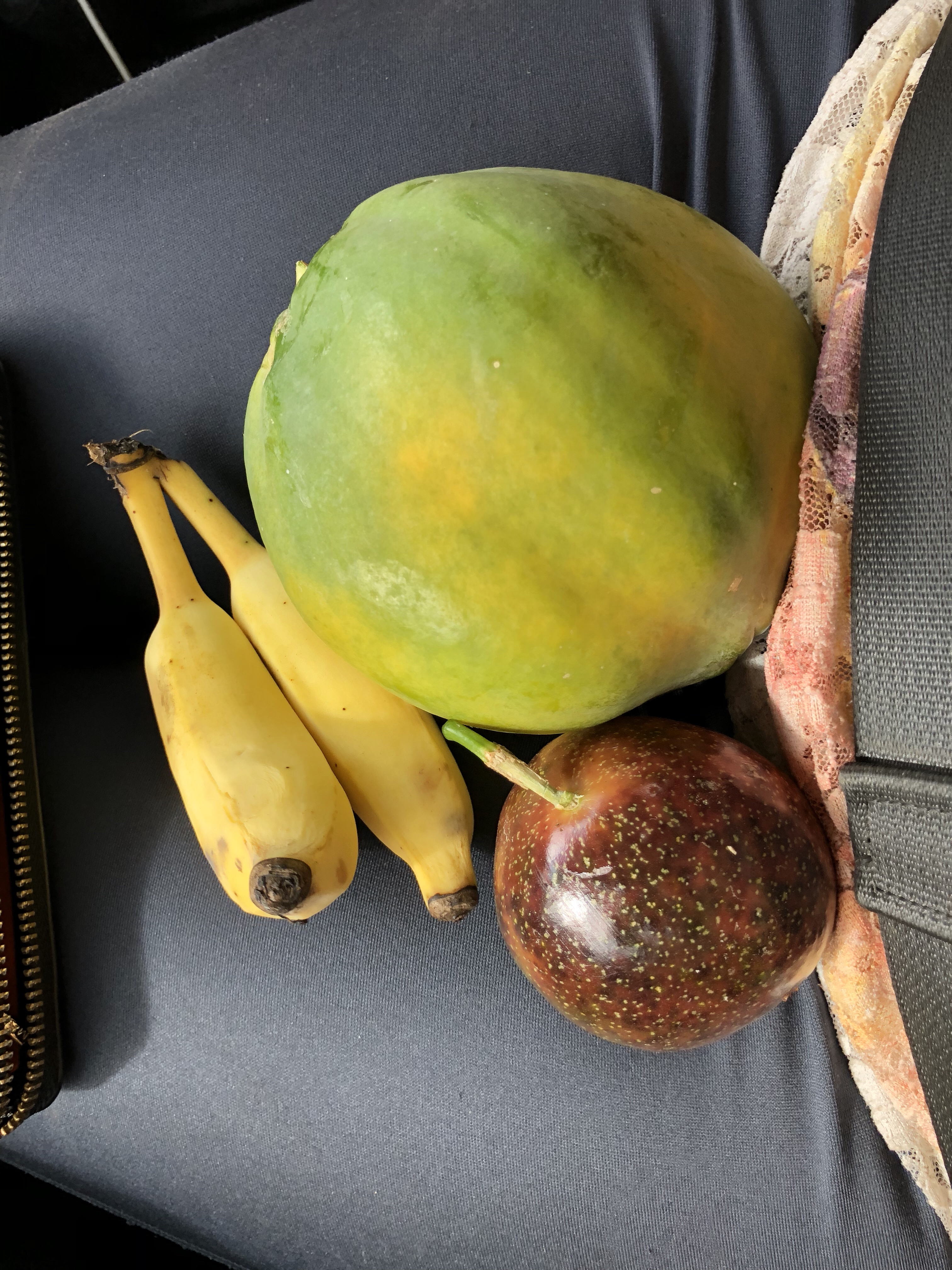
And off to another national park (Russell River) for our camp spot for the next two nights. This spot was magical – Oceanside campsites that were totally isolated from their neighbour – peaceful – bright blue Ulysses butterflies flitting around everywhere – plenty of trees to set up the hammock – and of course the requisite croc warnings.
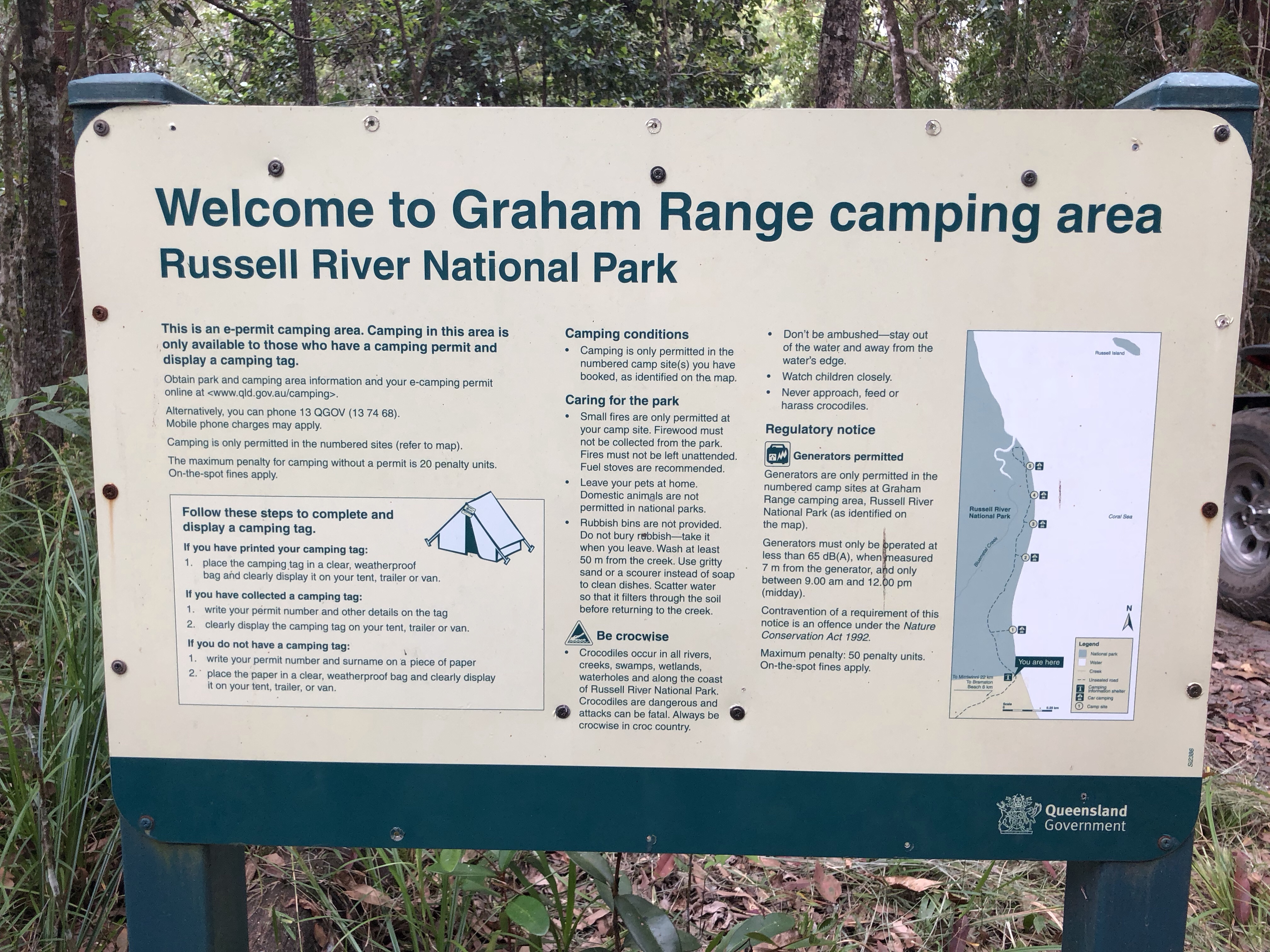
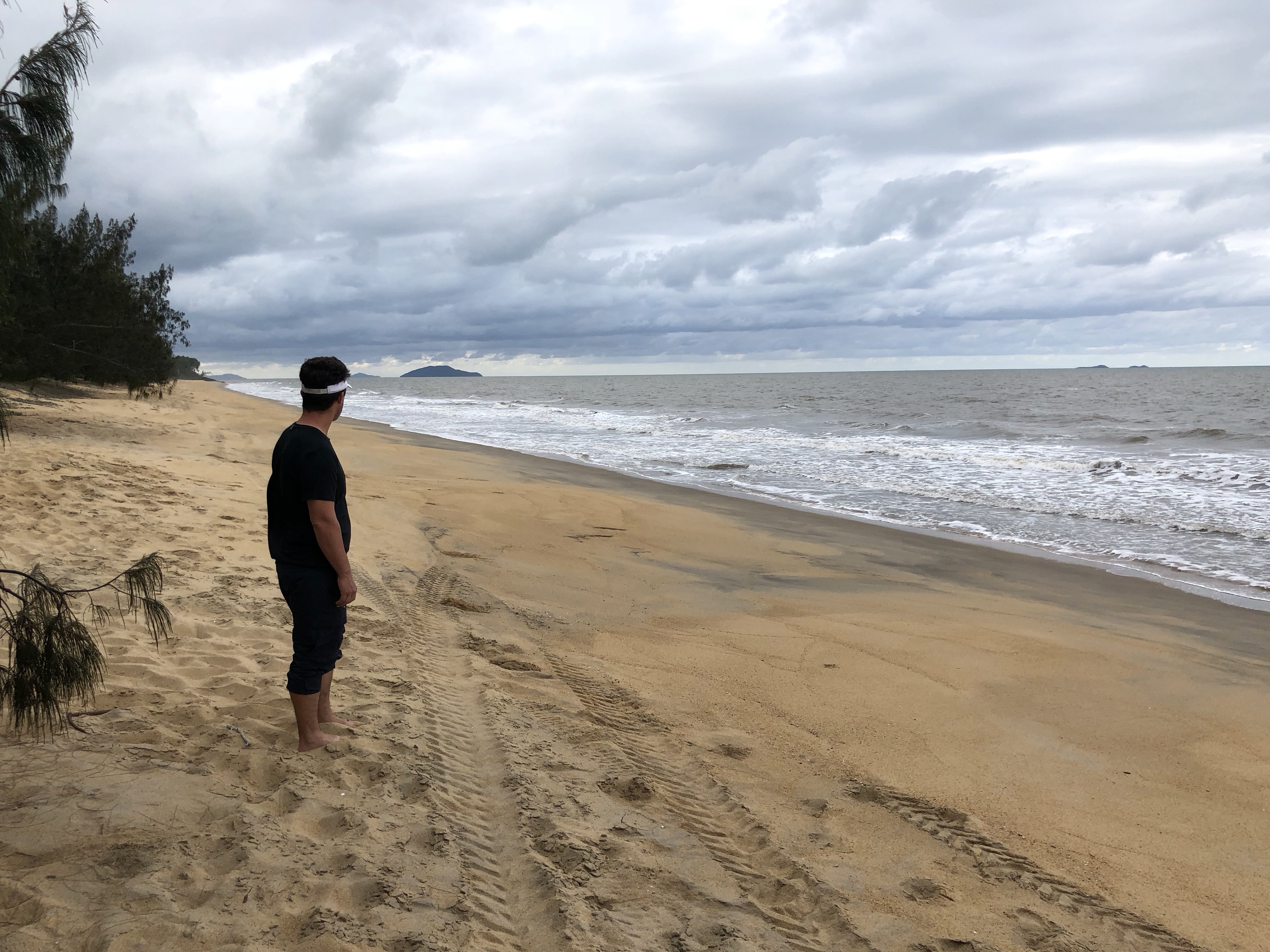
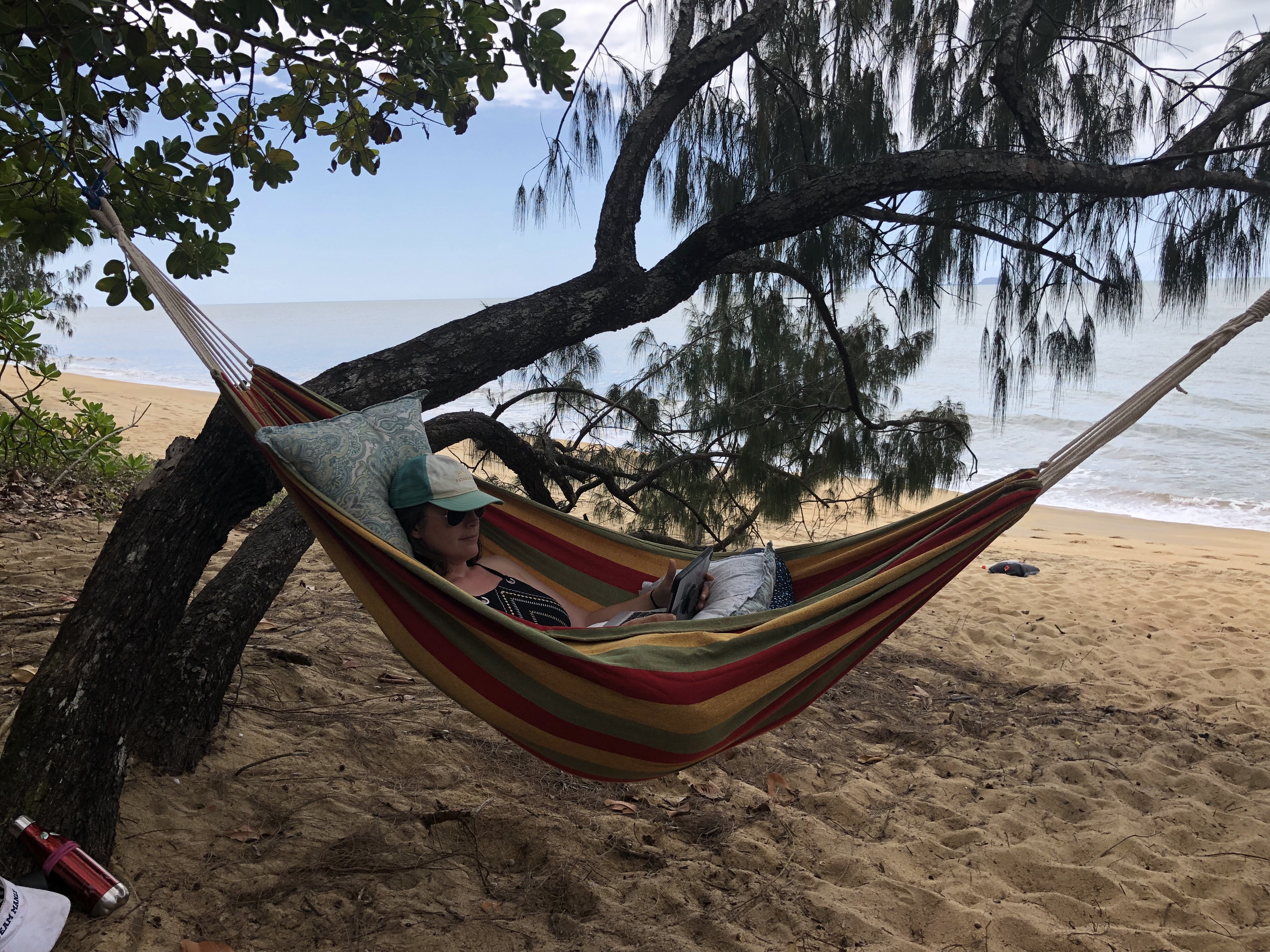
Since we were at Russell River for two nights we also took the opportunity to try out some of our camping gear we brought but hadn’t used yet – our mozzie netting for our Darche awning, and the solar camp shower (both pictured below – the camp shower is hanging in the tree). I’m pleased to report both are a huge success, yes our campsite was that secluded that we were able to shower! Both items will be really nice on this trip, the mozzie netting as an “indoor” area, and the solar shower to rinse off some of the dust and dirt that come with living outside pretty much 24/7.

From here it’s on to the Atherton Tablelands, then Cairns for just one night to prep us for heading up on our next remote 4wd destination on par with the Simpson Desert…Cape York. “The Tip” as it’s known is a must-do item on every Aussie 4wd itinerary and we’re getting pretty excited! But, more on that to come in a future post…
MVP: the solar shower! We were both feeling pretty grimy after a few nights in places without showers, and a swim in the creek just isn’t the same. A shower, even if it was low-flow and lukewarm, just makes us feel so much more human again…
So, Where Exactly Is This?
Here’s a screenshot of this leg of the journey from WikiCamps! The red is what we’ve already covered, and the green is what was featured in the post you just read. You can also follow us live at this link – our satellite device pings our shared map frequently.

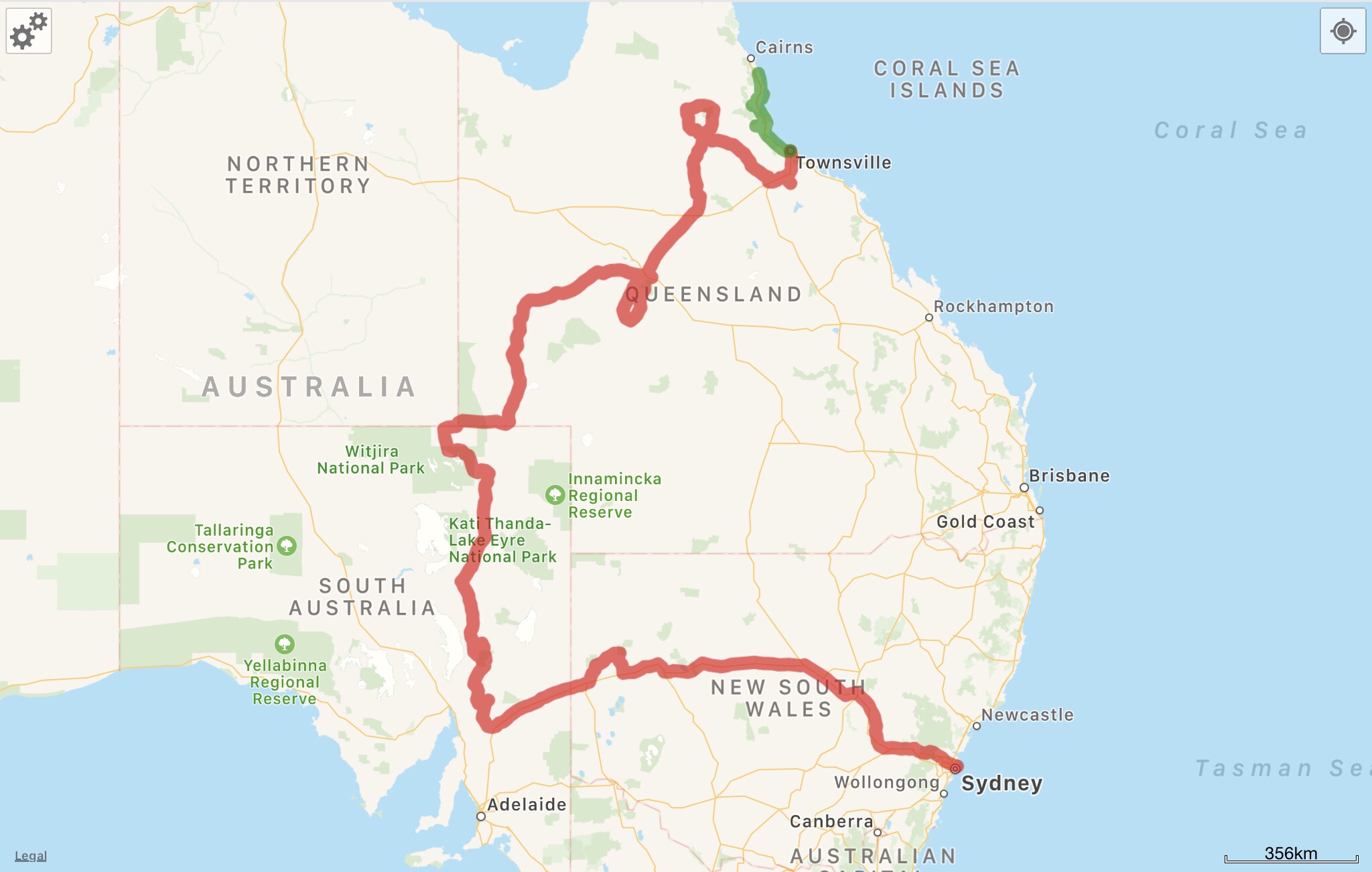

2 Comments
Ted
Question from your pub tour post – you said the barman was studying to be a Sparky. What’s that?
Pam Wright
A sparky is an electrician! Aussies love to abbreviate/nickname everything! We have sparkies, posties, tradies, fireies, ambos… check out this brief overview 😉 https://m.youtube.com/watch?v=yDb_WsAt_Z0